So, how exactly does one make 40 solder connections to a pair of big copper plates?
I puzzled over that one for a while. I had cut two discs from the copper sheet, about 3" in diameter. I used Fusion 360 to make a template for the 20 holes I'd need, pasted it onto the copper, and punched some holes with a transfer punch. They didn't pierce the copper, but I thought that would be fine - each dimple could hold a lead while I used my big soldering gun to heat it up.
Nope. Nowhere near enough heat.
Plan B occurred to me while waiting in vain for the soldering gun to heat up the copper disc: if only the disc were just below the melting point of solder, I could just push it over the top with a regular iron. So I bought a cheap hot plate at Target and gave it a shot. It was promising:
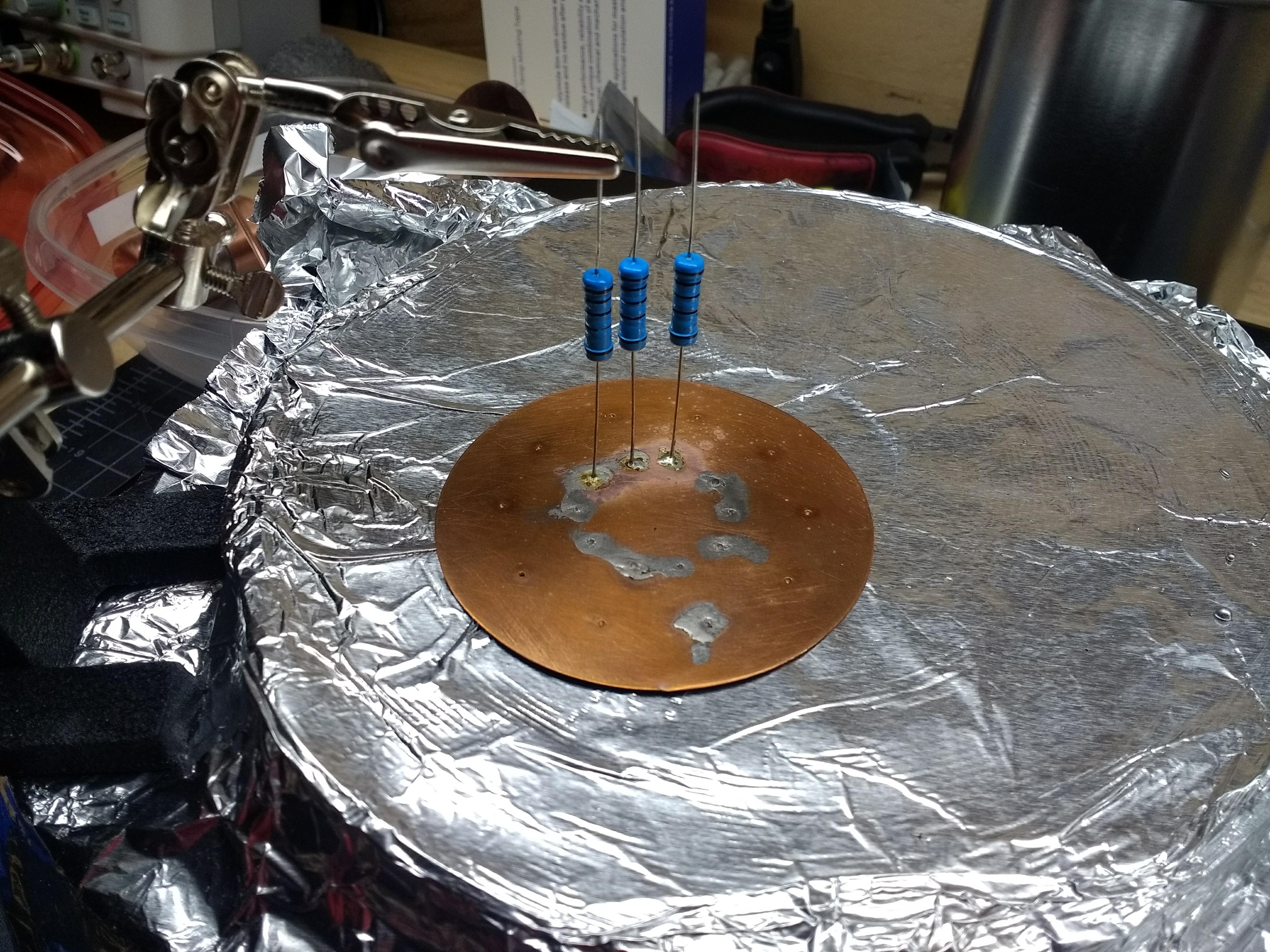
You can practically see what's coming. But I couldn't - I happily soldered away, pleased with my cleverness. I got to resistor number 13 before I learned that cheap Target hotplates don't exactly have PID loops to control their temperature:
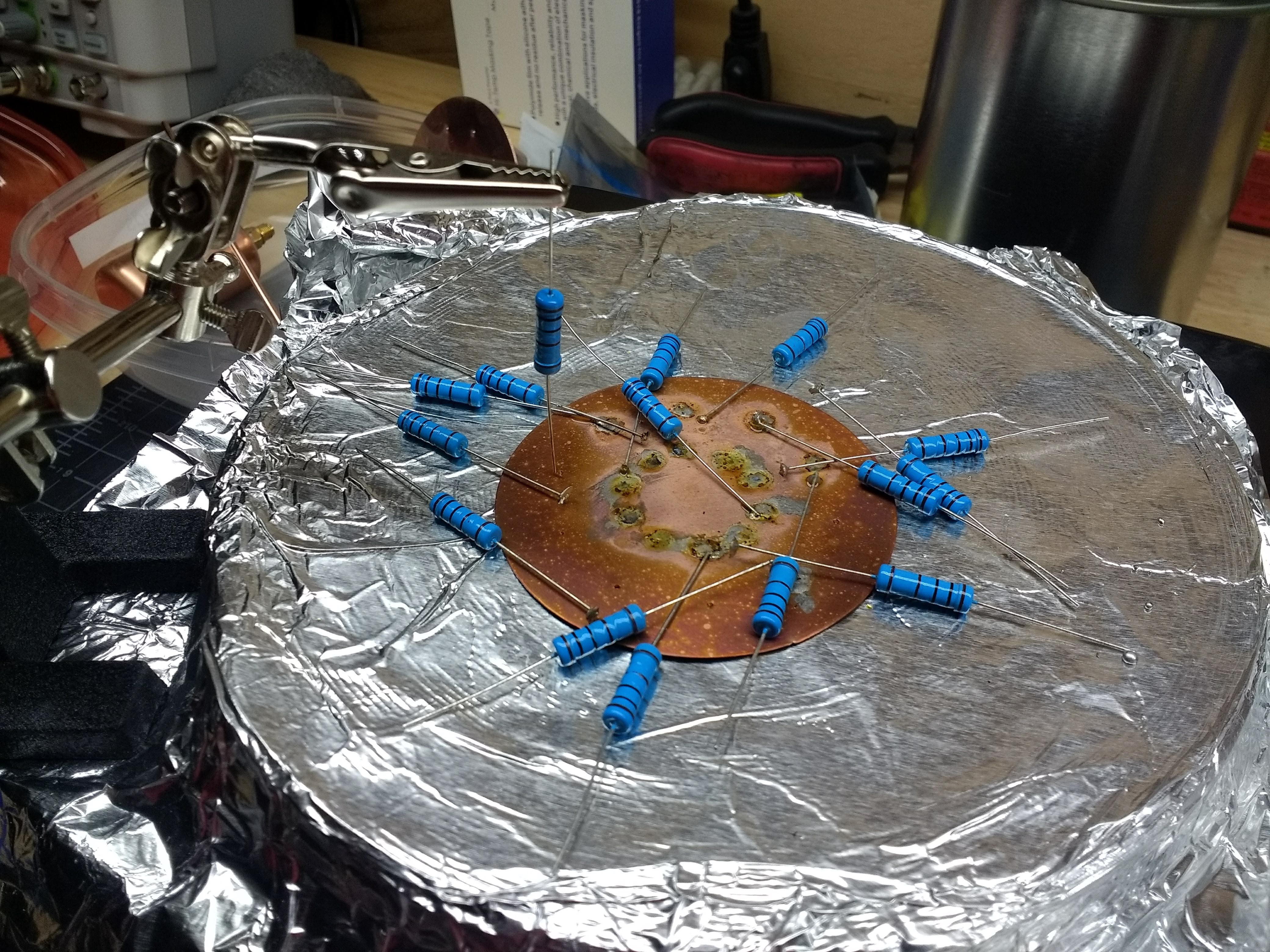
Still, the basic idea was somewhat sound. What I came up with was building the whole thing first, then soldering it with all the resistors mechanically attached to the plates. This required through holes of 0.6-mm, which meant I had to buy a pin vise and small bits. But with everything secured, the soldering went much better:
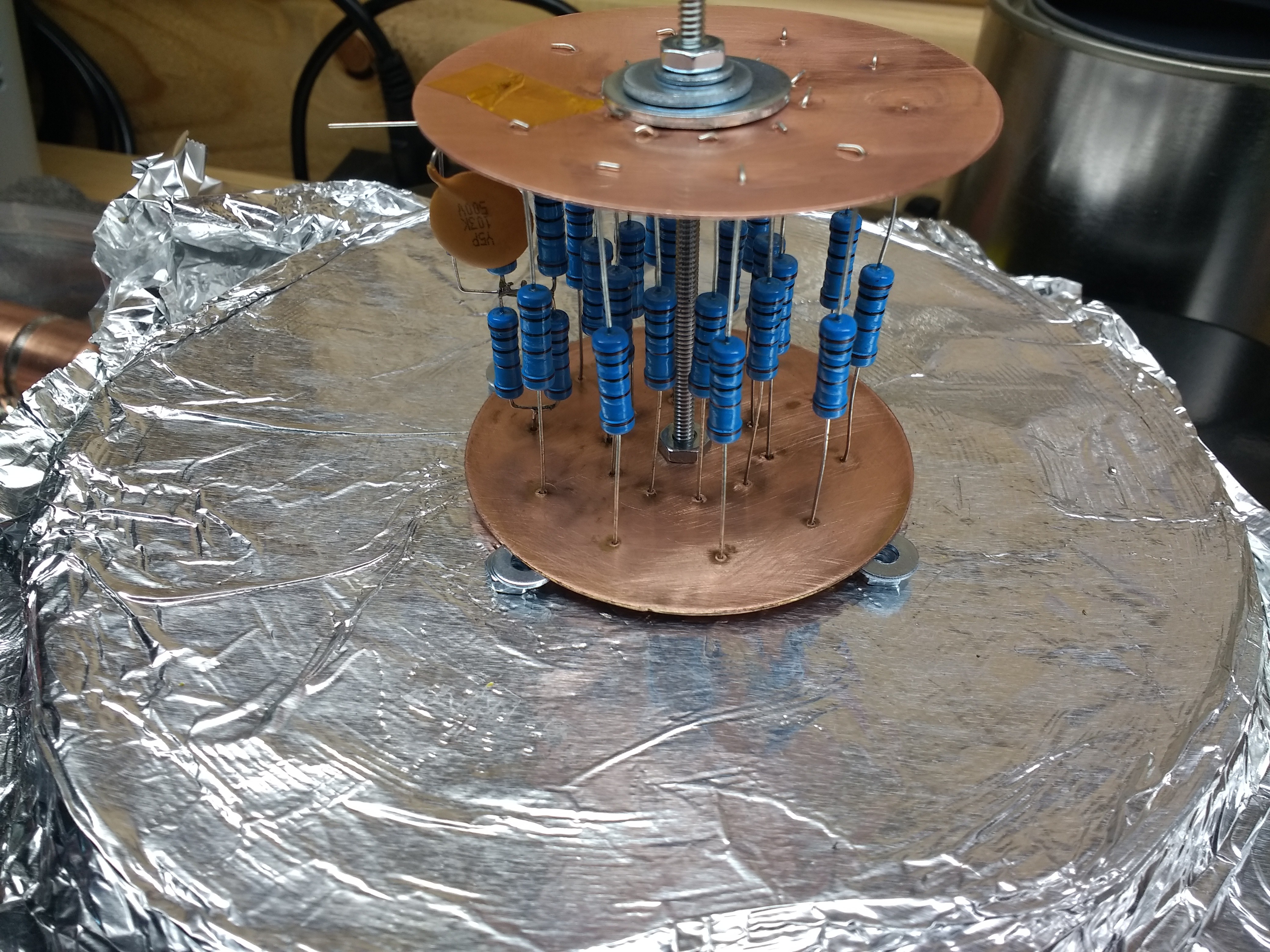
A length of 6-32 threaded brass rod holds the final assembly together and connects the center conductor of the SO-239 jack to the bottom plate. Here it is before trimming off the rod and soldering.
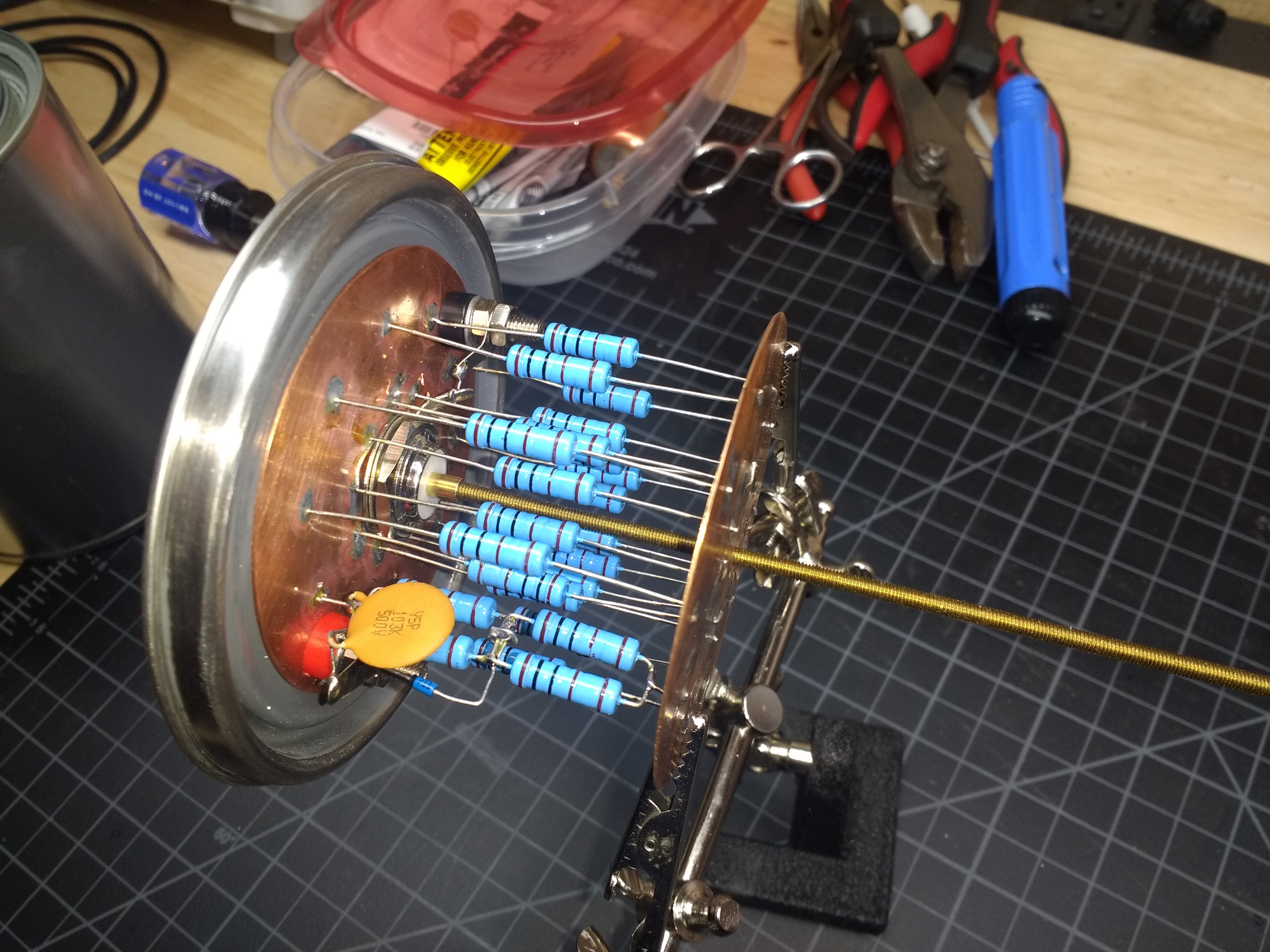
The end of the threaded rod needed a little turning down before it would fit in the SO-239 solder cup. Lacking a lathe - sigh - I chucked the rod in my drill and spun it against a file. A couple of brass hex nuts finished the connection to the bottom plate and Big Dummy was ready for an oily dunk.
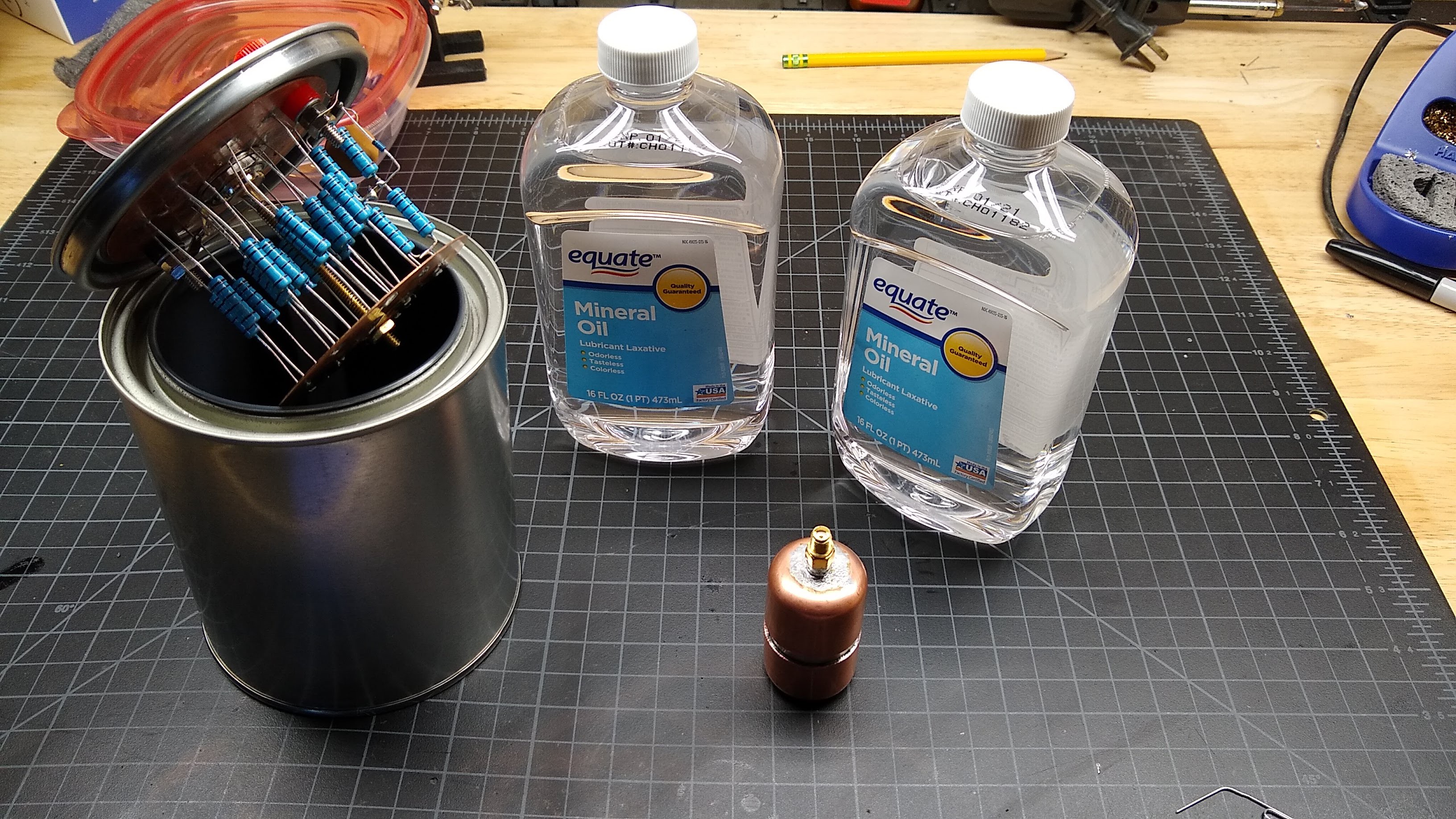
It tool most of two pints to fill the can. I haven's had a chance to test it yet - my big HF rig isn't set up now. More to come
 Dan Maloney
Dan Maloney
Discussions
Become a Hackaday.io Member
Create an account to leave a comment. Already have an account? Log In.